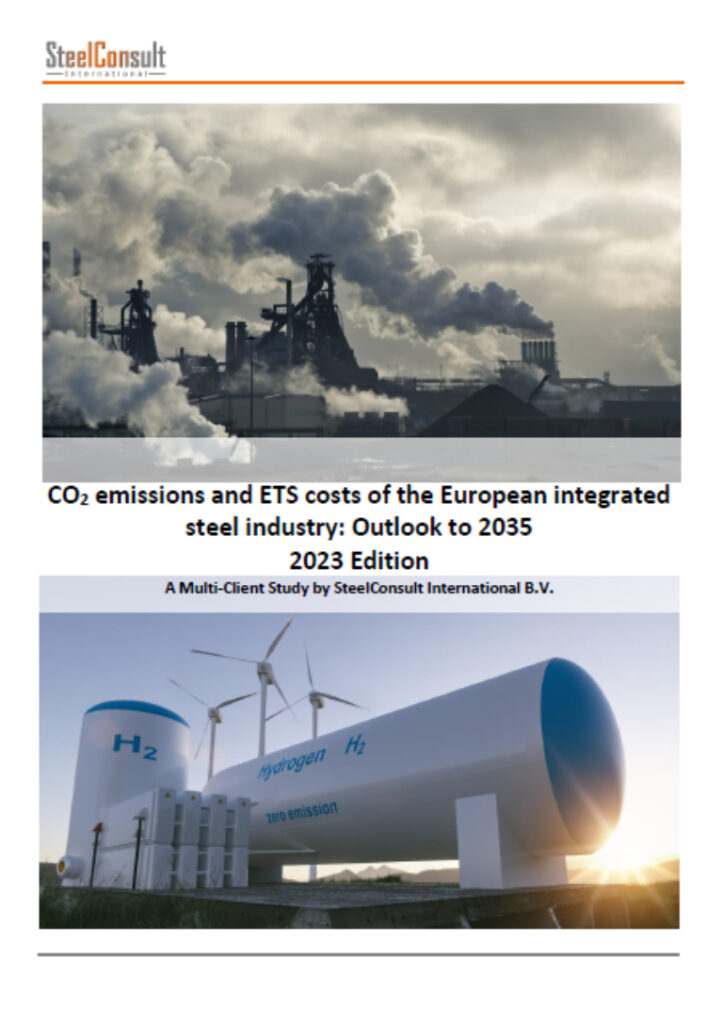CO2 emissions and ETS costs of the European integrated steel industry: Outlook to 2035
The EU Emissions Trading System (ETS) has entered Phase IV, which has seen further tightening of the regulations for EU steel mills. Meanwhile, CO2 allowances have been trading on the ETS at prices of almost €100/t of CO2, and the Fit for 55 package implemented by the European institutions will phase out free allowances for the EU steel industry by 2034 and likely drive ETS prices further upwards. All these developments will have profound consequences for European integrated steel mills, but also for mining companies and other suppliers to the EU steel industry. In addition, the Fit for 55 package will see the introduction of a Carbon Border Adjustment Mechanism (CBAM), which in the future will require foreign steel mills exporting steel to the EU and EU importers importing steel to report their embedded emissions and pay charges based on the ETS system. Furthermore, iron ore pellets exported to the EU will also become subject to the CBAM, which will have key implications for iron ore pellet exporters.
SteelConsult International has published a unique study “CO2 emissions and ETS costs of the European integrated steel industry: Outlook to 2035”, providing unrivalled insight into the carbon footprint and ETS costs of the European integrated steel industry.
Key features of the study:
- Provides detailed insight into the full carbon footprint upto hot rolling of 31 European integrated steel mills (2006-2035);
- Explains how the ETS works, and how steel is treated in Phase IV of the ETS;
- Covers CO2 emissions and ETS costs by process and product;
- Incl. Scope 1 direct and indirect emissions (from waste gases), Scope 2 and Scope 3 emissions;
- Forecasts are based on the new regulations for Phase IV of the ETS and the latest expected decarbonization initiatives by the mills;
Key questions answered in the study:
- How does the ETS work, and what does it mean for the steel industry?
What will change for steel mills in Phase IV of the ETS as a result of the Fit for 55 package? - What is the carbon footprint of each mill, how is it composed and how does it compare to the rest of the industry?
- Who are the most and the least carbon efficient performers, why and how may this change over time?
- What will be the impact of future decarbonization initiatives?
- How high are free allowances, shortages and ETS costs, and how will these develop in the future?
In total, subscribers will receive:
- A Summary Report (185 slides)
- An extensive summary of statistics in Excel
- 31 Excel plant databases

Please do not hesitate to contact us for any questions you may have on +31 297 761 337 or info@steelconsult.com
